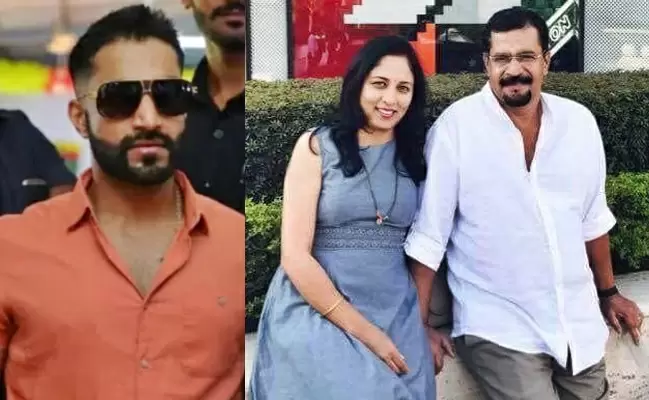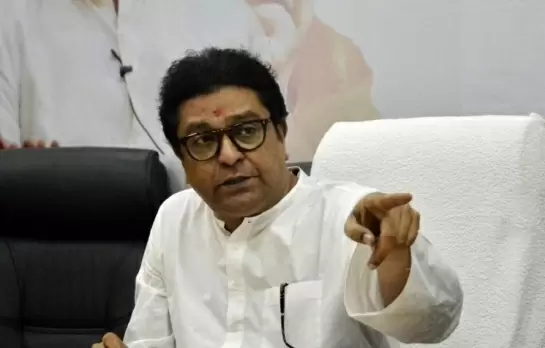Do not let global supporters of genocide look like saviours of Tamils

27-October-2011
Vol 2 | Issue 43
In the second part of his discourse on Sri Lanka, Sinhala academic Jude Lal Fernando traces the political history of the island nation and dispels the theory that British favoured the Tamils. The first part of this article appeared last week.
The British favoured the Sinhalese!
Tamil resistance was formed against the Sri Lankan unitary state and its Sinhala Buddhist nationalist ideology. This state and ideology is nothing but a British colonial product which was constructed in order to hold Sri Lanka as a strategic location in controlling India during the colonial period.
Its economy was built with the sweat of the Tamil Plantation Workers who had no citizenship rights.
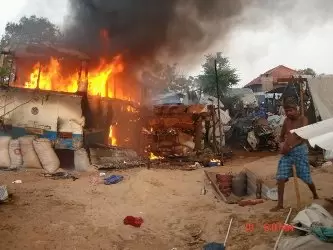 |
|
Mute spectators: Jude refuses to buy the theory that the ‘major powers’ including the US and the UK were unaware of the massacre of Tamils by the Sri Lankan army (Photos: www.warwithoutwitness.com)
|
As Indian history was written as a history of conflict between the Hindus and the Muslims, Sri Lankan history was written as a history of conflict between the Tamils and the Sinhalese, while forging a deep division between the Dravidian and Aryan civilisations.
In that ‘Aryan Sinhalese’ were seen as superior to the ‘Tamil Dravidians’. Contrary to the popular Sinhala Buddhist nationalist rhetoric, it was not the Tamils who were favoured by the British, but the Sinhalese themselves.
The fact that the Tamils had a higher proportion (not a higher number) of state and public sector employment than the Sinhalese until 1956 is used to prove the so-called privileged position that the Tamils supposedly enjoyed under the British.
The truth is that it was oppression and marginalisation faced by the Tamils under the British rule that created the conditions for them to seek and obtain petty bureaucratic jobs like station masters, bank officials and such like work for which English was needed.
The British had no reason to favour the Tamils as the latter were seen to be more inspired and motivated by the Indian freedom movement than the Sinhalese.
The Sinhala Buddhist (Sri Lankan) nationalist leaders never fought for total independence, but wanted a dominion state under the British, whereas the Tamil Youth Congress called for swaraj for whole of Sri Lanka following the inspiration of the Indian freedom movement.
For the British the key was to pull the Sinhalese away from connecting with the Tamils in the north and east and from those in the Plantation Sector and keep them loyal to British interests.
The unitary state structure and the Sinhala Buddhist ideology were the two main factors that provided political stability to Sri Lanka as strategic and satellite state of the British Empire. The political stability in Sri Lanka helped the British to rule India and the Indian Ocean.
It was this state ideology and structure that was rebuilt after the so-called independence in 1948, when Tamils began to discriminated in the issues of citizenship, land, employment, education, development etc.
It was in this context the Tamil resistance began. During the first 30 years after independence it followed a Gandhian type non-violent resistance. All of these were brutally crushed by the state.
Periodic murderous riots against the Tamils got worse to reach a crescendo in 1983. During the 1970s, the Tamil parties passed a resolution calling for a separate state based on the principle of self-determination.
In 1977 election, the Tamil parties which contested the elections on the basis of this resolution won vast majority of seats in the Tamil region.
The right-wing government in the 70s prohibited any party that called for separation and thereby closed the only parliamentary democratic option available for the Tamil parties.
It was at this historical juncture, after nearly three decades of peaceful protests, Tamil militancy emerged.
India which was alarmed by Colombo’s turn towards Israel-Washington Axis supported the Tamil movements in order to contain the Sri Lankan government and keep the valuable Trincomalee harbour from falling into the hands of the USA.
At the end of the Cold War, as India leaned more towards Washington, it also aligned closely with the Sri Lankan government and sent its troops to the Tamil region during 1987-1989.
It was during the same period that the Sri Lankan military repressed the Sinhala youth uprising in the South led by the People’s Liberation Front (JVP). This was caused by socioeconomic grievances of the Sinhala lower middle classes.
However, it has to be noted that the JVP also adopted the Sinhala Buddhist nationalist ideology. The party did not have a support base either with Tamils in the north and east, or the Tamil Plantation Workers in the central hills.
By sending its troops to Sri Lanka, India had to experience in the Tamil region what America went through in Vietnam.
With the withdrawal of the Indian troops, the LTTE emerged as a strong political-military force and eventually formed a de facto state by the time of the CFA/MOU in 2002. That is the history of Tami resistance in short. Let me come back to the 2002 CFA/MOU.
The global powers protect the unitary state!
By the time of the CFA/MOU in 2002, the LTTE de facto state had under its control about 15,000 square kilometres, but by 2009 May this was reduced to 1.5 square kilometres by the heavy bombardment from air, sea and land by the Sri Lankan security forces.
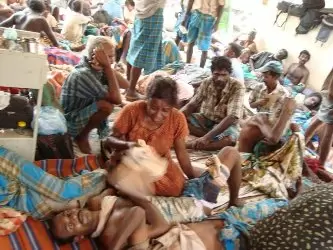 |
|
Every nation in the world wants to appease Sri Lanka because of its strategic location in the Indian Ocean. The Tamil struggle fell a victim to this appeasement
|
The area that was declared as the so called ‘safety zone’ by the government, where well over 300,000 people lived, was heavily bombarded. Who were these people?
They were the people who decided to live in the LTTE-controlled areas as a result of 60 years of oppression under the British made Sinhala Buddhist state (Sri Lankan state).
The Sri Lankan government made the claim that it was carrying out a humanitarian operation to save the Tamils from the LTTE!
The USA, UK, EU and the Security Council issued statements expressing their concern about the civilians in LTTE territory and requested them to come to the Sri Lankan government controlled areas!
Nobody asked the question, ‘why should they come? It is their land!’
It is clear that the whole objective of the Sri Lankan government and the major international powers was to destroy the achievements of the Tamil resistance that established a balance of power through the 2002 CFA/MOU.
It is a unique and rare moment in recent history where a people’s resistance movement achieved a parity of esteem in local and international politics without the support of any major power in the world and that happens to be in Sri Lanka which has strategic harbours (Trincomalee and Hambantota) in the Indian Ocean.
It is this Ocean which is being mapped by the American establishment with the support of India against the Chinese expansion! Who paid the price for it?
It was not ‘a war without witnesses’!
It is often said that the war in Sri Lanka was a ‘war without witnesses’. It is true in a sense, as all the local and international media and the UN and other agencies were expelled from the region by the Sri Lankan government in October 2008.
When the Israeli forces attacked Gaza the UN agencies did not leave, but in Sri Lanka they left from the Tamil region which is the ‘Gaza of South Asia’.
Nevertheless, this is also untrue, because every diplomat in Colombo knew what was going on.
They had satellite evidence and their own sources of information. The UN very clearly knew the gravity of the situation, but did not want to release the scale and the figures of the massacres.
What should we conclude? Every major power, especially the Western powers, allowed the genocidal massacre to happen and justified it in the name of the sovereignty of the Sri Lankan state.
Why do the UN, the American and British governments want to talk about war crimes and crimes against humanity in Sri Lanka (two years after end of the war) by releasing the UN report on human rights situation in the country?
First of all they want to hide their complicity in the massacre of the Tamils and their responsibility in destroying the 2002 CFA/MOU.
Secondly, the accusation is coming mainly from the US/UK axis as China seems to have outweighed this axis in Sri Lanka by 2011.
Thirdly, these powers depict the Tamils as ‘helpless victims’ and expect these victims to depend on them to look for solutions like in the case of South Sudan and Kosovo.
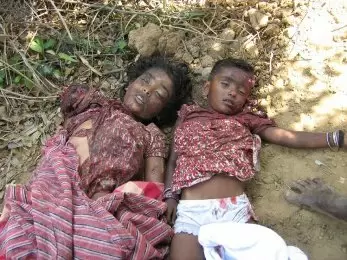 |
|
Lest we forget: The deaths of thousands of civilians in the brutal war could have been averted had the major powers intervened at the appropriate time
|
India’s role in looking for a political solution within a unitary state structure fits into the US/UK axis very well. China too would be happy as long as the unitary state structure is untouched.
For all the powers, whether they are from East or West the most important factor is the unitary state structure which is the tool of domination. All these powers need the hub of the Indian Ocean, that is, Sri Lanka, to have a strong state so that they could control the waves of the Indian Ocean which is important both for commercial and military purposes in the emerging global politics dominated by the USA and China.
These so called, ‘helpless victims’, the Tamils, resisted for 60 years without the support of the imperial powers and emerged as a formidable force in Asian politics counterbalancing the Euro-American, Chinese, Indian and the Sri Lankan unitary state.
As Western imperial powers led by the USA need a strong state in Israel to control the Middle East and a strong Colombian government to manipulate Latin American politics they also need a strong state in Sri Lanka in order to get hold of the Indian Ocean in their strategies against China.
China too has backed the Sri Lankan state in its competition with the Western powers and India.
Unfortunately, following the same steps, progressive countries in Latin America have also backed the Sri Lankan government even though it is the most militarised state in South Asia and the first and the fastest in implementing neo-liberal economic agendas in the region.
Could the progressive governments of Cuba, Venezuela, Bolivia and Nicaragua be supporters of the Sri Lankan brand of Pinochets (Chile) and José Efraín Ríos Montts (Guatemala)? Could ethics in politics be betrayed for geo-political strategic games?
The massacre of Tamils and the military defeat of their resistance are not necessarily a defeat of the Tamil people and the progressive people in the world.
It is a betrayal and defeat of the principled politics and humanity that the progressive governments in the world claim to uphold.
Conclusion: The power of Hope
It is often said that the magnitude of the loss of lives in genocide is unimaginable. The numbers are staggering and the destruction caused is inexplicable.
The imagination of the unimaginable Tamil genocide is possible only within the reassertion of the Tamil people’s right to nationhood, homeland and self-determination.
The imagination of Tamil genocide should also radically question the separation of ethics from politics in the so-called progressive countries and political parties in the world who are also indirectly responsible for the crime.
Memories of those who were killed or offered their lives for the cause continuously inspire us to recommit ourselves to the goal of justice, freedom and equality by strongly upholding the Tamil struggle not only as a nationalist struggle, but also as an internationalist and human struggle of the 21st century.
The most practical step towards this direction is not to allow the global supporters of the genocide to appear as the saviours of Tamils.
Let us maintain the spirit of independence of the Tamil struggle. (Concluded)
The author Dr. Jude Lal Fernando is Research Fellow and Lecturer, Irish School of Ecumenics, Trinity College, Dublin, Ireland
Read Part I of this Article here










